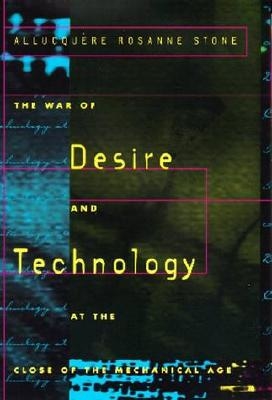Face-to-face meetings, and even telephone conversations, involuntarily reveal crucial aspects of identity such as gender, age, and race. However, these bits of identity are completely masked by computer-mediated communications; all that is revealed is what we choose to reveal—and then only if we choose to tell the truth. The rise of computer-mediated communications is giving people the means to try on alternative personae—in a sense, to reinvent themselves—which, as Stone compellingly argues, has both positive and potentially destructive implications.
Not a traditional text but rather a series of intellectual provocations, the book moves between fascinating accounts of the modern interface of technology and desire: from busy cyberlabs to the electronic solitude of the Internet, from phone sex to "virtual cross-dressers," and from the trial of a man accused of having raped a woman by seducing one of her multiple personalities to the Vampire Lestat.
Throughout, Stone wrestles with the question of how best to convey a complex description of a culture whose chief activity is complex description. Writing eloquently of creating a "text that breaks rules," serving as a "sampler of possible choices," she employs elements from a wide range of disciplines and genres, including cultural and critical theory, social sciences, pulp journalism, science fiction, and personal memoirs.
Each chapter of the book can be read as a kind of performance piece, with its own individual voice and structure. In the final chapter, Stone threads the various narratives together, holding them in productive tension rather than attempting to collapse them into a single unifying statement: a process that best reflects the confused, ambiguous, and sometimes contradictory state of gender relations at the close of the mechanical age.
